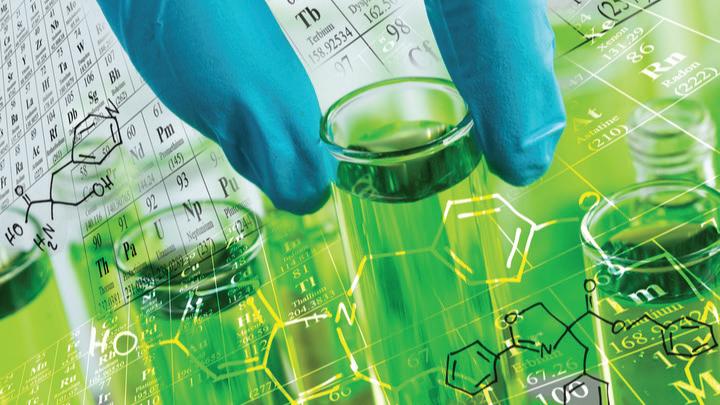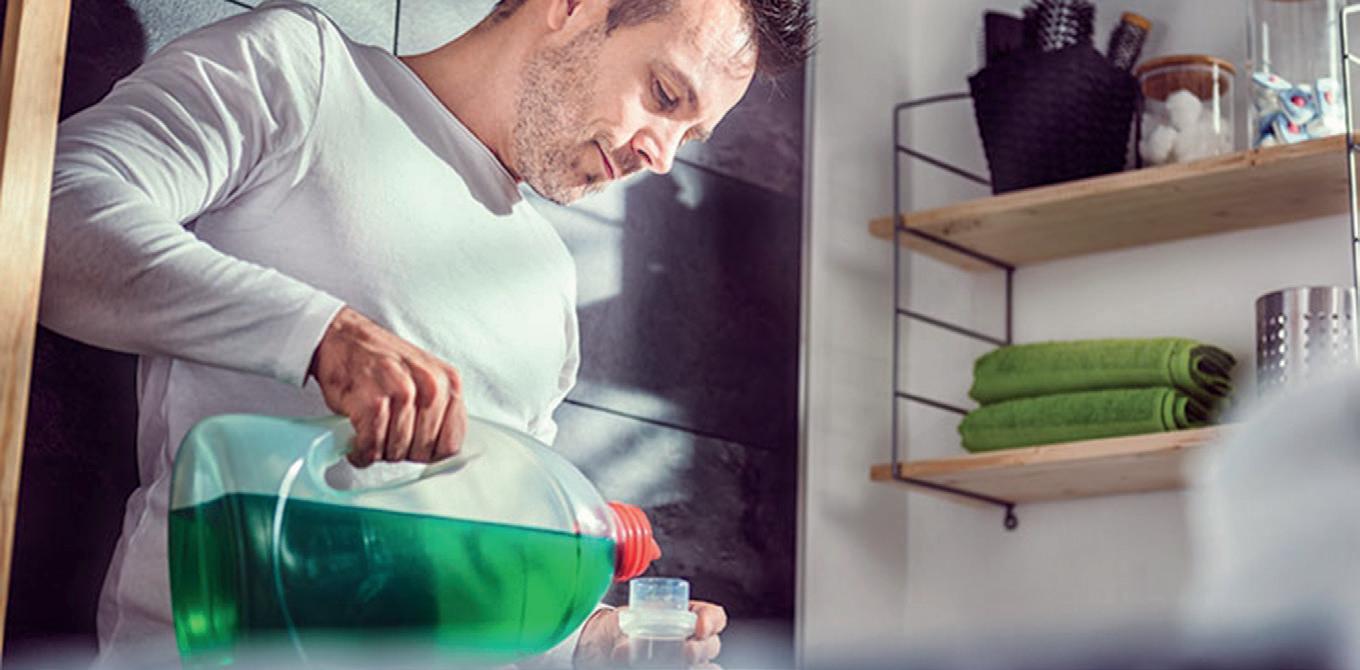
6 minute read
Alkyl polyglucosides: Bio-based and biodegradable surfactants for home and personal care
from HPIC March 2020
Introduction
The on-going ‘green’ trend in the personal care industry coupled with global environmental concerns, place natural-origin, biodegradable and skin-friendly sugar-based surfactants such as alkyl polyglucosides (APGs) in high demand.
Advertisement
APGs, produced from vegetable oils and starch, are claimed to possess advantages over other classes of surfactants in terms of dermatological and ocular safety, biodegradability, wettability, foam production, and cleaning ability. Studies show that there is no environmental risk even where APGs are used in large quantities. Some APGs have been granted the status of pharmaceutical excipients. Nevertheless, it remains a challenge to persuade some formulators to replace low-cost conventional surfactants with these alternatives.
In cosmetic, APGs are used to formulate shampoo, face wash, hand wash, shower gel and many more cleansing products for skin and hair.
Chemical structure
Formally, APGs are described in terms of an acetal structure, wherein:
R represents the alkyl group of 8-16 carbon atoms; DP is the degree of polymerisation (average number of glucose units per alkyl radical), which is always greater than 1 and usually less than 2 (typically from 1.3 to 1.7).
CH 2 OH
O
O OH
OH OR
DP
R=C 8 -C 16 DP: 1-2
Commercial APGs are complex mixtures of compounds differentiated in the number of glucose units present, the length of their alkyl chains and even in the possible isomeric differences of the cyclic ring. Historical development
Emil Fischer synthesized and identified the first APG in 1893, but these products only had academic interest and were not used commercially until in the 1950s, when several companies developed the processes for it is manufacture.
In 1989, Cognis, at the time part of the Henkel Group, succeeded in designing an industrial production process for APG surfactants for the home care and body wash segments. In 1992, Henkel inaugurated the first APG plant in the USA, with a production of 25,000-tpa, and in 1995 the second plant with equal capacity in Germany(1).
Production of APGs, different modes of their application as well as use of this class of surfactants in various mixtures have been the subject matter of numerous applications both within international and regional patent protection mechanisms ever since the early eighties(2). Manufacture
APGs are made by reacting a fatty alcohol with a sugar, using an acid as a catalyst. Fatty alcohols, which give the APG the hydrophobic part of the molecule, can be obtained from petrochemical sources and renewable natural sources such as fats and oils. The hydrophilic part of the APG is provided by the sugar. Production processes can use polymeric carbohydrates or monomers as Table 1 Commercially produced APGs INCI name Carbon chain Butyl glucoside C4 Hexyl glucoside C6 Caprylyl glucoside C8 Decyl glucoside C10 Caprylyl/decyl glucoside C8-10 Lauryl glucoside C12-14 Coco glucoside C8-14 Cetearyl glucoside C16-18

Applications
In cosmetics and personal care products, decyl glucoside, lauryl glucoside, arachidyl glucoside, caprylyl/ capryl glucoside and coco-glucoside are reported to function as cleansing agents. C12-20 alkyl glucoside and cetearyl glucoside are reported to function as emulsifying agents, while ethyl glucoside is reported to function as a skin-conditioning agent (humectant).
raw materials, i.e. glucose, starch, etc.
Properties
APGs have excellent properties as a surfactant: * Higher foaming power, compared to other nonionic surfactants; * Superior wetting properties and low surface tension; * Synergistic with some anionic surfactants and can reduce the irritation of anionic surfactants; * Good compatibility with commonly used ingredients in home and personal care products;
* Use over a wide pH range; * Low irritation to human skin and eyes; * No turbidity point, easily soluble in water, and high solubility even in high concentration of electrolyte; * Can be easily diluted, no gel phenomena; * Tolerance to hard water; * Low critical micelle concentration, which means it is needed in small quantities; and * Excellent biodegradability – the metabolites are only carbon dioxide and water. In cosmetic applications, decyl polyglucoside is the most frequently used APG, for it delivers reasonably high foaming and cleansing performance for a nonionic surfactant without the irritation potential of anionic detergents, such as alkyl sulphates and alkyl ether sulphates(3).
Market trends
According to a study by Persistence Market Research, a market research firm, the global APG market is valued at US$902-mn in 2018, and is forecast to grow at a CAGR of 6.8% to 2028, creating an additional opportunity of US$842-mn in the ten-year period(4).
Growing demand from homecare and laundry detergents industry will
Table 2 Applications of some APGs in HPC products
INCI Characteristics Main Applications
Lauryl glucoside Can be used as a foaming agent, conditioner or emulsifier. It has excellent foaming capacity and good dermatological compatibility. Used as a base surfactant or a co-surfactant in cosmetic surfactant cleansing products, as shampoo or shower and bath preparations.
Decyl glucoside Has an excellent and stable foam. Can be combined with oils and additive, or other glucosides (to enhance the foam and skin conditioning properties). Used in ionic formulations to add foam depth and emulsifying properties. It is suitable for use as a base surfactant or a co-surfactant in cosmetic surfactant cleansing preparations, like bubble bath and shower gels, shampoos, conditioners, body washes, cleansers, hand soaps or body scrubs.
Coco glucoside Can be used as a foaming agent, conditioner or emulsifier. Derived from coconut and fruit sugars. It is completely biodegradable. Increases the foaming capacity in skincare and haircare products. It also has the excellent benefit of acting as an emulsifier to allow essential oils and water to mix.
drive the APG market to over 973-kt (kilotonnes) in global sales by 2028, according to another report by FACT.MR, a market research firm(5). Demand is expected to grow at a CAGR of 8% to 2028.
Europe currently dominates the global APG market, thanks to increasing consumer preference for eco-friendly, biodegradable products, while North America is the second largest market, wherein the bio-surfactant has made some inroads into replacing conventional surfactants such as linear alkyl benzene sulphonic acid, among others. North America is expected to be the fastest growing region for APG market for the next five years(6).
Total demand for APGs in Europe is estimated at nearly 151-kt (kilotonnes) in 2017. Demand from the pharmaceutical, personal care, paints, and textiles industries is being driven by both government mandates and consumer awareness.
Globally, demand for capryl glucoside and decyl glucoside are significantly higher than other product types, as the two are used in homecare and laundry detergents on account of their superior performance and biodegradable nature. Global demand for capryl glucoside alone is expected to reach 160-kt in 2018.
Key players in the APG business include: BASF SE, DowDupont, Croda International Plc, Huntsman Corporation, Galaxy Surfactants, SEPPIC SA, LG Household & Healthcare, and Pilot Chemical Company. The key participants are focusing on augmenting production capacity to meet the rising global demand.
Concluding remarks
Household detergents dominate current APG demand, but personal care is the fastest growing application segment. One limiting factor for its greater usage is price, especially in the price-sensitive markets of emerging Asia wherein much of the surfactant demand growth is expected to take place.

Refer enc es 1. https://steemit.com/steemstem/@ejrangel/alkyl-polyglycoside 2. Alkyl Polyglucosides – From Natural-Origin Surfactants to Prospective Delivery Systems, Ed. Ivana Pantelic, Woodhead Publishing, ISBN 978-1-907568-65-7. 3. Ingredient profile – Decyl Glucoside, Michael Fevola, Cosmetics & Toiletries, September 20, 2013. 4. https://www.persistencemarketresearch.com/market-research/ alkyl-polyglucoside-surfactantsmarket.asp 5. https://www.factmr.com/mediarelease/480/alkyl-polyglucosidemarket 6. https://www.transparencymarketresearch.com/alkyl-polyglucosides-market.html
Mrs. Usha S. - usha@hpicindia.com









